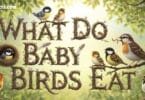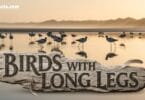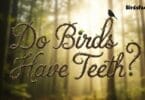Virginia Birds -Top15 Birds with Facts
Have you wondered what those birds are that are visiting your backyard in Virginia?
Well, this guide will help you to find out how to identify these birds by sight and sound and what time of year you can spot them in Virginia. Also, get a free ID chart to print with the most common backyard birds in Virginia.
Backyard birds in Virginia all year: Northern Cardinal, Mourning Dove, Carolina Wren, American Robin, American Crow, Carolina Chickadee, Blue Jay, Tufted Titmouse, Red-bellied Woodpecker, Song Sparrow, Downy Woodpecker, Northern Mockingbird, White-breasted Nuthatch, American Goldfinch, European Starling, Eastern Bluebird, Eastern Towhee, Red-winged Blackbird, House Finch, Northern Flicker, Pileated Woodpecker, House Sparrow
1.Common Yellowthroat

virginia state bird
Common Yellowthroats are small songbirds that are brownish on the back and bright yellow underneath, with long tails. The males have a black masks across their faces. The brightness of the yellow can vary geographically, and they may be more olive in parts underneath.
Geothlypis trichas
Length: 4.3-5.1 in (11-13 cm)
Weight: 0.3-0.3 oz (9-10 g)
Wingspan: 5.9-7.5 in (15-19 cm)
Common Yellowthroats spend the summer breeding over most of North America, except Alaska and northern Canada. Some remain all year along the Gulf Coast and Pacific Southwest. Then, they migrate south for winter.
You can find Common Yellowthroats often in marshy or wetland areas and brushy fields living in thick, tangled vegetation.
2. Cedar Waxwing
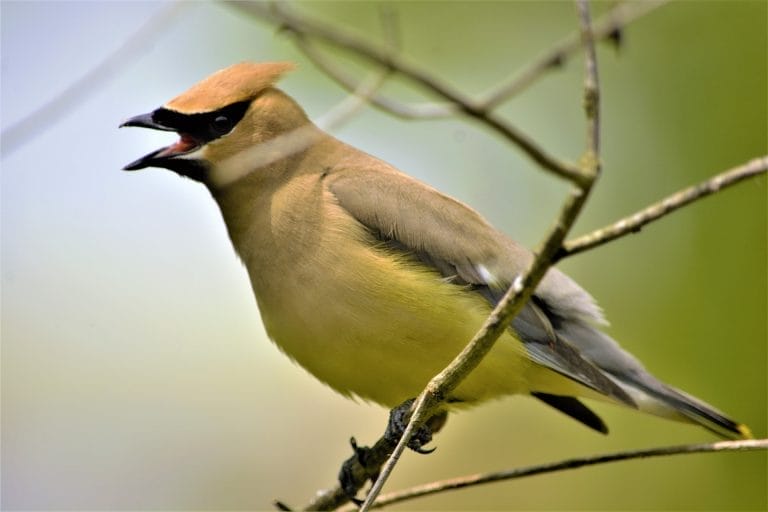
west virginia state bird
Cedar Waxwings are elegant social birds that are pale brown on the head, chest, and crest, which fades to gray on the back, wings, and tail.
Their belly is pale yellow and bright yellow towards the tail. They have a narrow black mask over their eyes and bright red on the wingtips.
Bombycilla cedrorum
Length: 5.5-6.7 in (14-17 cm)
Weight: 1.1 oz (32 g)
Wingspan: 8.7-11.8 in (22-30 cm)
Cedar Waxwings remain all year in the northern half of the US. Those that breed in Canada migrate to the southern half of the US for winter.
They make a high-pitched call and can be found in berry bushes, woodlands, and streams.
3. Chipping Sparrow
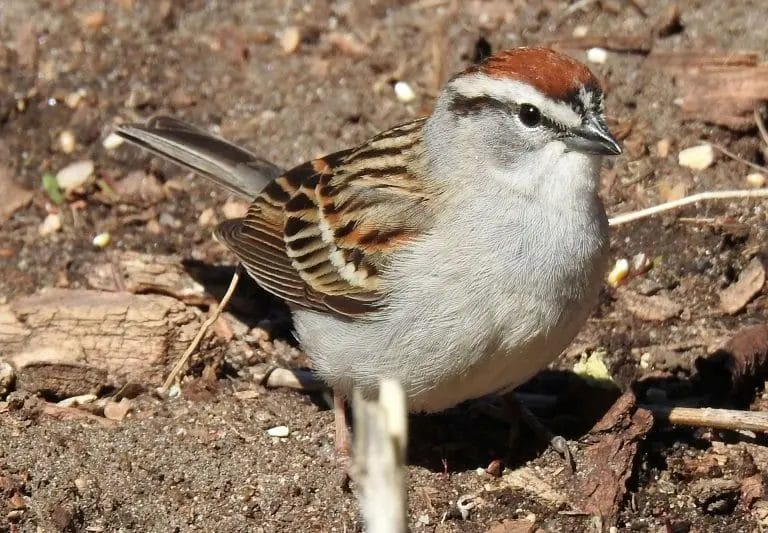
birds of west virginia
Chipping Sparrows are slender, long-tailed birds with a grayish belly and brown and black-streaked back, with a rusty crown and black eye line. In winter, the colors are more subdued.
Spizella passerina
Length: 4.7-5.9 in (12-15 cm)
Weight: 0.4-0.6 oz (11-16 g)
Wingspan: 8.3 in (21 cm)
Chipping Sparrows spend their summer breeding in the US and Canada before flying to Mexico and Florida for winter. Some remain all year in the southern states.
You can find Chipping Sparrows in small flocks on open ground and will come to backyards for many kinds of birdseed.
4. House Sparrow

state bird of virginia
The House Sparrow is another introduced species that has done very well and is now one of the most common birds. They have gray and brown heads and white cheeks. Their backs are black and brown, and their bellies are gray.
Passer domesticus
Length: 5.9-6.7 in (15-17 cm)
Weight: 0.9-1.1 oz (27-30 g)
Wingspan: 7.5-9.8 in (19-25 cm)
House Sparrows live in the US and Southern Canada all year.
You can find them near houses and buildings, and they can be pretty tame, and they may even eat out of your hand.
House Sparrows eat mostly grain and seed as well as discarded food. They can be considered a pest because they are non-native, but they are found in backyards even if you do not feed them.
5. Pileated Woodpecker
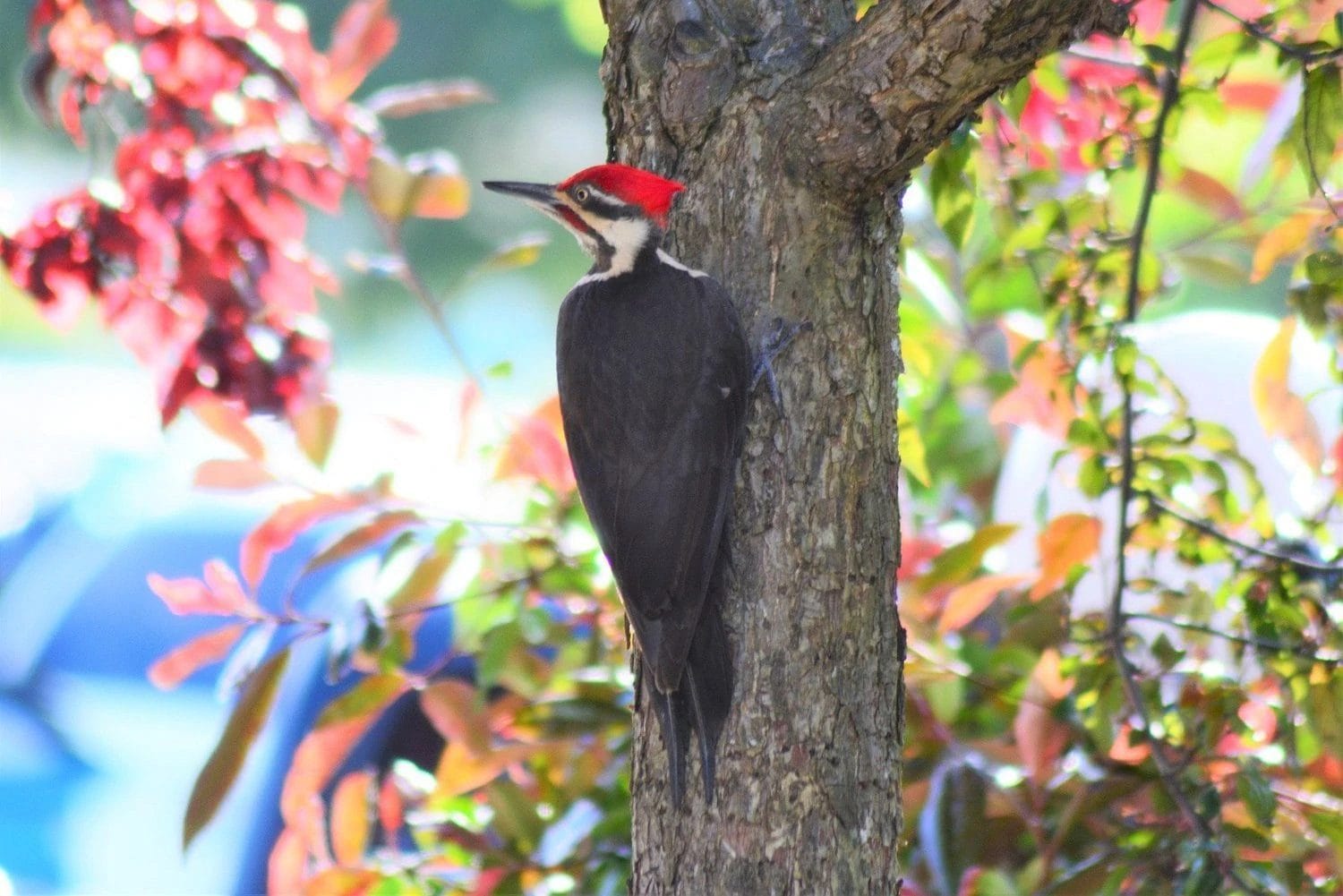
birds of northern virginia
Pileated Woodpeckers are the biggest woodpecker in North America, and their flaming-red triangular crest is very striking.
They are black with a white stripe, and when flying, the white underside of the wings can be seen. Males have an additional red stripe on the cheek.
Dryocopus pileatus
Length: 15.8-19.3 in (40-49 cm)
Weight: 8.8-12.3 oz (250-350 g)
Wingspan: 26.0-29.5 in (66-75 cm)
They live all year in eastern US states, across Canada, and into northwestern US states.
Pileated Woodpeckers mostly eat carpenter ants from dead trees and fallen logs, but they also eat beetle larvae, termites, and other insects as well as fruit and nuts such as blackberries, sumac berries, dogwood, and elderberry. They make a loud shrill, whinnying call and deep, loud drumming.
6. Yellow-rumped Warbler

birds in west virginia
Yellow-rumped Warblers are gray with flashes of yellow on the face, sides, and rump and white in the wings.
Females may be slightly brown, and winter birds are paler brown with bright yellow rumps and sides turning bright yellow and gray again in spring.
Setophaga coronata
Length: 4.7-5.5 in (12-14 cm)
Weight: 0.4-0.5 oz (12-13 g)
Wingspan: 7.5-9.1 in (19-23 cm)
Yellow-rumped Warblers breed predominantly in Canada and parts of the Rockies and the Appalachian mountains.
During migration, they can be seen in the Midwest before overwintering in southern and southwestern US states and the Pacific Coast and into Mexico and Central America.
You can find Yellow-rumped Warblers in coniferous forests, especially during the breeding season. During winter, they can be found in open areas with fruiting shrubs. In summer, they eat mostly insects and on migration, and in winter, they eat mostly fruit, including bayberry and wax myrtle.
7. Northern Flicker

yellow birds in Virginia
Northern Flickers are large brown woodpeckers with black spots and a white patch on their rump in flight, plus a red nape of the neck in the males.
Northern Flickers have red or yellow flashes in the wings and tail depending on where they originate. Red-shafted birds live in the west, and yellow-shafted birds live in the east.
Colaptes auratus
Length: 11.0-12.2 in (28-31 cm)
Weight: 3.9-5.6 oz (110-160 g)
Wingspan: 16.5-20.1 in (42-51 cm)
Northern Flickers can be spotted across the US all year and in Canada during summer. Those that breed in Canada migrate south for the winter.
Northern Flickers mainly eat ants, beetles, fruits, and seeds, and they can often be seen on the ground digging with their curved bill.
8. House Finch

black birds in virginia
House Finches males have a red head and breast, and the rest of their bodies are mainly brown-streaked. Females are brown-streaked all over.
Haemorhous mexicanus
Length: 5.1-5.5 in (13-14 cm)
Weight: 0.6-0.9 oz (16-27 g)
Wingspan: 7.9-9.8 in (20-25 cm)
Originally only in western US states, House Finches were introduced to eastern US states and have done very well, even pushing out the Purple Finch.
They can be found in parks, farms, forest edges, and backyard feeders in noisy groups that are hard to miss.
9. Barn Swallow

common birds in virginia
Barn Swallows are small birds with a deep-blue back, wings and tail, and reddish-brown underneath and across the face. Their tail has long outer feathers that give a deep fork. The dark color of their back can make them look black-and-white.
Hirundo rustica
Length: 5.9-7.5 in (15-19 cm)
Weight: 0.6-0.7 oz (17-20 g)
Wingspan: 11.4-12.6 in (29-32 cm)
Barn Swallows breed in Canada and the US before heading to Central and South America. They can be found flying over meadows, farms, and fields looking for insects and usually build mud nests on man-made structures such as in barns.
10. Red-winged Blackbird

red birds in virginia
Red-winged blackbirds are very common and easy to identify with the all-black coloring except for the reddish-orange wing patches. Females are rather dull in comparison with streaky brown color.
Agelaius phoeniceus
Length: 6.7-9.1 in (17-23 cm)
Weight: 1.1-2.7 oz (32-77 g)
Wingspan: 12.2-15.8 in (31-40 cm)
Red-winged Blackbirds remain all year in the lower 48 and the Pacific Coast of British Columbia. Those that breed in Canada and some northern US states migrate south for the winter.
They can often be spotted sitting on telephone wires, and the males will fiercely defend their territories in the breeding season, even attacking people that get too close to nests. In winter, they roost in large numbers into the millions.
11. Eastern Towhee

state bird of west virginia
Eastern Towhees are striking large sparrows, about the size of Robin, with a black head, throat, and back, reddish sides, long tails, and a white belly in the males. The females are similar but brown instead of black.
Pipilo erythrophthalmus
Length: 6.8-8.2 in (17.3-20.8 cm)
Weight: 1.1-1.8 oz (32-52 g)
Wingspan: 7.9-11.0 in (20-28 cm)
Eastern Towhees live all year in southeastern US states, but birds further north move south for the winter.
You can find Eastern Towhees rummaging in the undergrowth along the edges of forests and thickets.
12. Gray Catbird

virginia state bird and flower
Gray Catbirds are so named because of their distinctive catty mew song that can last for up to 10 minutes. They are medium-sized songbirds with a slate gray coloring, black cap and tail, and a reddish patch under their tails.
Dumetella carolinensis
Length: 8.3-9.4 in (21-24 cm)
Weight: 0.8-2.0 oz (23.2-56.5 g)
Wingspan: 8.7-11.8 in (22-30 cm)
Gray Catbirds breed in the Midwest, eastern US states, and southern Canada before heading to the Gulf Coast and the Caribbean for winter. Some remain all year along the East Coast.
You can spot Gray Catbirds in dense shrubs, small trees, and along forest edges or hedgerows. They are named after their ‘mew’ sounding call.
13. Eastern Bluebird
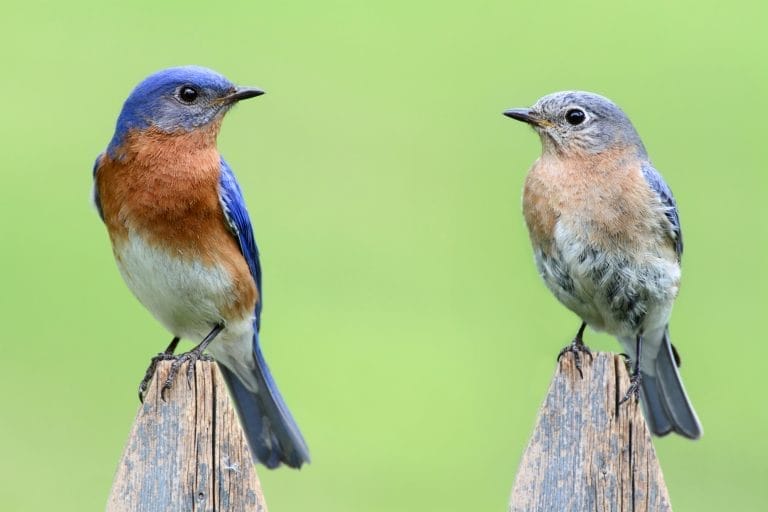
virginia yellow birds
Eastern Bluebirds are small thrushes with big, rounded heads, large eyes, and big bellies.
The males are deep blue on the back and a reddish color underneath. Females are grayer above with some blue in the wings and tail and a less vivid orange-brown breast.
Sialia sialis
Length: 6.3-8.3 in (16-21 cm)
Weight: 1.0-1.1 oz (28-32 g)
Wingspan: 9.8-12.6 in (25-32 cm)
They live all year in southeastern US states, but those that breed in the northern US and southern Canada migrate south.
You can find Eastern bluebirds in meadows, and they can often be spotted perched on wires and posts or low branches, looking for insects.
14. European Starling

what is virginia’s state bird
European Starlings are not native but are now one of the most numerous songbirds. They are stocky black birds with iridescent purple, green, and blue tones.
Sturnus vulgaris
Length: 7.9-9.1 in (20-23 cm)
Weight: 2.1-3.4 oz (60-96 g)
Wingspan: 12.2-15.8 in (31-40 cm)
European Starlings live in all of North America, except the north of Canada and Alaska.
They are considered a pest by some due to their aggressive behavior. These birds fly in large, noisy flocks and can be seen perched in groups on the top of trees or flying over fields.
15. American Goldfinch

yellow birds of virginia
American Goldfinches are popular birds with the males’ bright yellow and black coloring in spring. The females are duller brown, as are males in winter.
Spinus tristis
Length: 4.3-5.1 in (11-13 cm)
Weight: 0.4-0.7 oz (11-20 g)
Wingspan: 7.5-8.7 in (19-22 cm)
American Goldfinches can be found in most of North America and are usually resident all year. However, those that breed in Canada and the Midwest migrate to southern US States for winter.
They can be found in weedy fields and overgrown areas foraging for sunflower, thistle, and aster plants. They are also common in suburbs, parks, and backyards.
Read More Article: Indiana Birds-Top 15 Indiana Birds
Read More Article: Top 15 Most Beautiful Crested Birds
Read More Article: 500 Birds Of South Carolina
Read More Article: Arizona Birds-Top 12 Arizona Birds
Read More Article: Blue Colored Birds
Read More Article: Can Dogs Eat Raspberries


